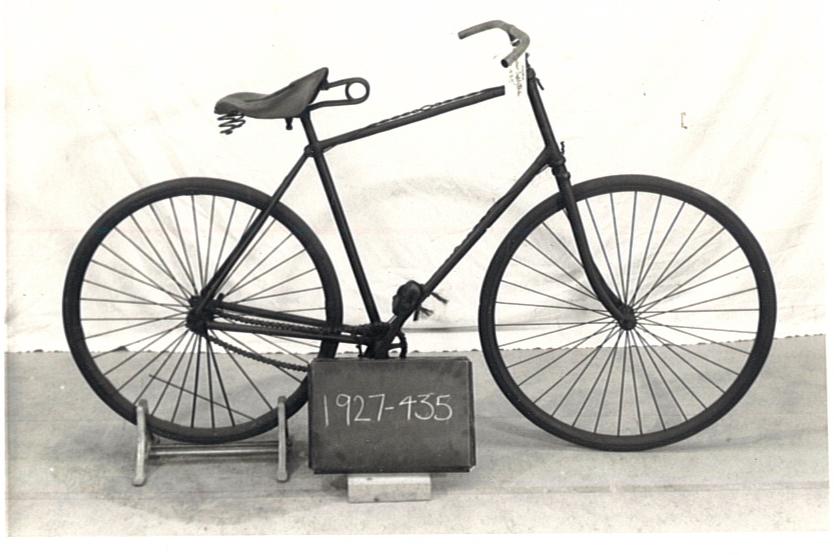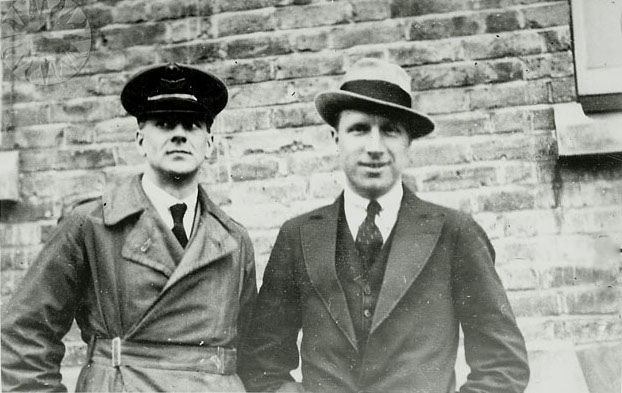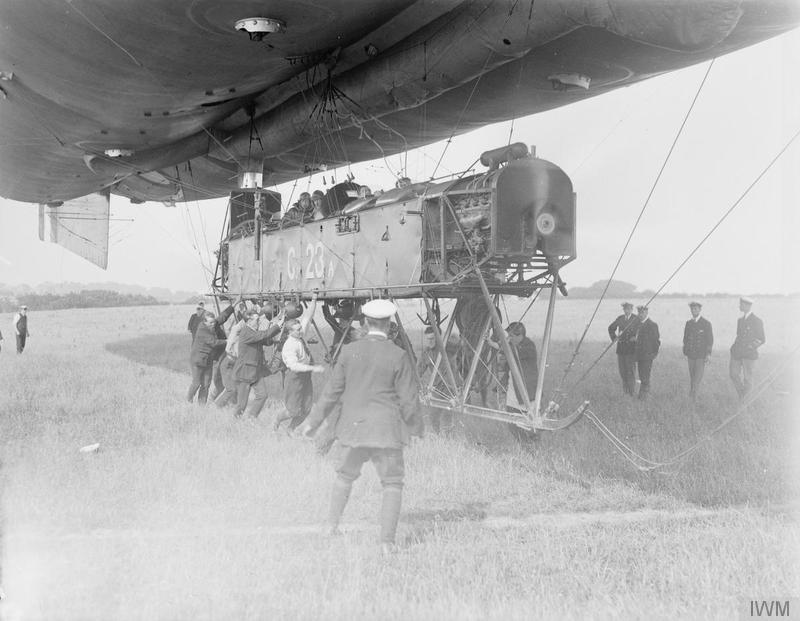|
Sunbeam Side-valve Aircraft Engines
Sunbeam, Wolverhampton, England, started to build aircraft engines in 1912. Louis Coatalen joined Sunbeam as chief engineer in 1909, having previously been Chief Engineer at the Humber company works in Coventry. The company quickly became one of the UK's leading engine manufacturers and even designed an aircraft of its own. Sunbeam discontinued the production of aircraft engines after Coatalen left the company in the 1930s. Crusader engine In the autumn of 1912, Coatalen designed a V8 engine, which delivered 120 hp at 2500 rpm. It was called the Crusader and was announced in the British aviation press in March 1913. Aircraft manufacturers welcomed this, as no really suitable British engines were available at the time. The company procured a French Farman biplane in which to test the new engine, and also hired a full-time test pilot for the project. This was John Alcock, who later became well known for his famous non-stop Atlantic flight with Arthur Brown. The test ... [...More Info...] [...Related Items...] OR: [Wikipedia] [Google] [Baidu] |
Sunbeam Motor Car Company
Sunbeam Motor Car Company Limited was a British automobile manufacturer with its works at Moorfields in Blakenhall, a suburb of Wolverhampton in Staffordshire, now West Midlands. Its Sunbeam name had been registered by John Marston in 1888 for his bicycle manufacturing business. Sunbeam motor car manufacture began in 1901. The motor business was sold to a newly incorporated Sunbeam Motor Car Company Limited in 1905 to separate it from Marston's pedal bicycle business; Sunbeam motorcycles were not made until 1912. In-house designer Louis Coatalen had an enthusiasm for motor racing accumulated expertise with engines. Sunbeam manufactured their own aero engines during the First World War and 647 aircraft to the designs of other manufacturers. Engines drew Sunbeam into Grand Prix racing and participation in the achievement of world land speed records. In spite of its well-regarded cars and aero engines, by 1934 a long period of particularly slow sales had brought continui ... [...More Info...] [...Related Items...] OR: [Wikipedia] [Google] [Baidu] |
Louis Coatalen
Louis Hervé Coatalen (11 September 1879 – 23 May 1962) was an automobile engineer and racing driver born in Brittany who spent much of his adult life in Britain and took British nationality. He was a pioneer of the design and development of internal combustion engines for cars and aircraft. France Coatalen, the second son of J Coatalen, was born in the Breton fishing town of Concarneau / Konk-Kerne and went on to study engineering at Arts et Métiers ParisTech, in the town of Cluny (France). Career After serving his apprenticeship with De Dion-Bouton, Clément and Panhard et Levasseur he left France to work in England in 1900. After a short time with the Crowden Motor Car Company he joined Humber Limited in 1901Obituary M. Louis Coatalen. ''The Times'', Friday, 25 May 1962; p. 18; Issue 55400 and was to become their chief engineer. He designed their 8-10 and 10-12 models. They were highly successful but their design was, unusually for Coatalen, totally conventional.W O Bent ... [...More Info...] [...Related Items...] OR: [Wikipedia] [Google] [Baidu] |
Humber Limited
Humber Limited was a British manufacturer of bicycles, motorcycles, and cars incorporated and listed on the stock exchange in 1887. It took the name "Humber & Co Limited" because of the high reputation of the products of one of the constituent businesses that had belonged to Thomas Humber. A financial reconstruction in 1899 transferred its business to Humber Limited. From an interest in motor vehicles beginning in 1896, the motor division became much more important than the cycle division and the cycle trade marks were sold to Raleigh in 1932. The motorcycles were withdrawn from sale during the depression of the 1930s. Humber is now a dormant marque for automobiles as well as cycles. Following their involvement in Humber through Hillman in 1928 the Rootes brothers acquired 60 per cent of Humber's ordinary capital, sufficient for a controlling interest. The two Rootes brothers joined the Humber board in 1932 and began to make Humber the holding company for vehicle manufacturing ... [...More Info...] [...Related Items...] OR: [Wikipedia] [Google] [Baidu] |
John Alcock (RAF Officer)
Captain Sir John William Alcock (5 November 189218 December 1919) was a British Royal Navy and later Royal Air Force officer who, with navigator Lieutenant Arthur Whitten Brown, piloted the first non-stop transatlantic flight from St. John's, Newfoundland to Clifden, Ireland in June 1919. He died in a flying accident in France in December later that same year. Early life John Alcock was born on 5 November 1892, perhaps in the coach-house adjoining Basford House on Seymour Grove, Firswood, Manchester, England. He attended Heyhouses School in Lytham St. Annes. He first became interested in flying at the age of 17. His first job was at the Empress Motor Works in Manchester. In 1910 he became an assistant to Works Manager Charles Fletcher, an early Manchester aviator and Norman Crossland, a motor engineer and founder of Manchester Aero Club. It was during this period that Alcock met the Frenchman Maurice Ducrocq who was both a demonstration pilot and UK sales representative f ... [...More Info...] [...Related Items...] OR: [Wikipedia] [Google] [Baidu] |
Brooklands
Brooklands was a motor racing circuit and aerodrome built near Weybridge in Surrey, England, United Kingdom. It opened in 1907 and was the world's first purpose-built 'banked' motor racing circuit as well as one of Britain's first airfields, which also became Britain's largest aircraft manufacturing centre by 1918, producing military aircraft such as the Wellington and civil airliners like the Viscount and VC-10. The circuit hosted its last race in August 1939 and today part of it forms the Brooklands Museum, a major aviation and motoring museum, as well as a venue for vintage car, motorcycle and other transport-related events. History Brooklands motor circuit The Brooklands motor circuit was the brainchild of Hugh Fortescue Locke-King, and was the first purpose-built banked motor race circuit in the world. Following the Motor Car Act 1903, Britain was subject to a blanket speed limit on public roads: at a time when nearly 50% of the world's new cars were produced in ... [...More Info...] [...Related Items...] OR: [Wikipedia] [Google] [Baidu] |
Coastal Airship
__NOTOC__ The Coastal Class (often known as the C-Class or simply the 'Coastals') were a class of non-rigid airship or "blimp" used by the Royal Naval Air Service (RNAS) during World War I. The C-class blimp operated by the United States Navy after the war was a completely unrelated design. In total 35 Coastals were built, all at RNAS Kingsnorth, Kent. Entering service in 1916, the Coastal class remained in widespread service until 1918, with a few members of the class still in service at the signing of the Armistice, while others were replaced by the improved C-Star class as they became unfit for service. The blimps were used for long anti-submarine patrols in the Western Approaches and English Channel, protecting convoys from German U-boats. The Coastal class was one of the first aircraft types specifically designed to detect and attack submarines. History and design The C-Class was far from a new design. The prototype was built in 1915 by using the envelope from the No. 10 ... [...More Info...] [...Related Items...] OR: [Wikipedia] [Google] [Baidu] |
Claudel-Hobson
Claudel-Hobson was a series of British carburettors manufactured by H. M. Hobson Ltd. Introduced in 1908, they were widely used on British car and aircraft engines in the early 20th century. Applications included Sunbeam automobiles as well as Armstrong Siddeley, Bristol, de Havilland The de Havilland Aircraft Company Limited () was a British aviation manufacturer established in late 1920 by Geoffrey de Havilland at Stag Lane Aerodrome Edgware on the outskirts of north London. Operations were later moved to Hatfield in H ..., and Napier aircraft engines. (retrieved 1 August 2018) References External links [...More Info...] [...Related Items...] OR: [Wikipedia] [Google] [Baidu] |
Ignition Magneto
An ignition magneto, or high-tension magneto, is a magneto that provides current for the ignition system of a spark-ignition engine, such as a petrol engine. It produces pulses of high voltage for the spark plugs. The older term ''tension'' means ''voltage''. The use of ignition magnetos is now confined mainly to engines where there is no other available electrical supply, for example in lawnmowers and chainsaws. It is also widely used in aviation piston engines even though an electrical supply is usually available. In this case, the magneto's self-powered operation is considered to offer increased reliability; in theory, the magneto should continue operation as long as the engine is turning. History Firing the gap of a spark plug, particularly in the combustion chamber of a high-compression engine, requires a greater voltage (or ''higher tension'') than can be achieved by a simple magneto. The ''high-tension magneto'' combines an alternating current magneto generator a ... [...More Info...] [...Related Items...] OR: [Wikipedia] [Google] [Baidu] |
Short 184 (8359) (6857765499)
The Short Admiralty Type 184, often called the Short 225 after the power rating of the engine first fitted, was a British two-seat reconnaissance, bombing and torpedo carrying folding-wing seaplane designed by Horace Short of Short Brothers. It was first flown in 1915 and remained in service until after the armistice in 1918. A Short 184 was the first aircraft to sink a ship using a torpedo, and another was the only British aircraft to take part in the Battle of Jutland. Design and development Torpedo-dropping trials had been undertaken using a Gnome powered Short Admiralty Type 166 but this had proved insufficiently powerful, and so in September 1914 a new specification was formulated for an aircraft to be powered by the Sunbeam Mohawk engine currently being developed. Design proposals were invited from Sopwith, J. Samuel White and Short Brothers. Horace Short's response when the requirements were explained him by Murray Sueter, the director of the naval air department, was ... [...More Info...] [...Related Items...] OR: [Wikipedia] [Google] [Baidu] |
Short Type 184
The Short Admiralty Type 184, often called the Short 225 after the power rating of the engine first fitted, was a British two-seat reconnaissance, bombing and torpedo carrying folding-wing seaplane designed by Horace Short of Short Brothers. It was first flown in 1915 and remained in service until after the armistice in 1918. A Short 184 was the first aircraft to sink a ship using a torpedo, and another was the only British aircraft to take part in the Battle of Jutland. Design and development Torpedo-dropping trials had been undertaken using a Gnome powered Short Admiralty Type 166 but this had proved insufficiently powerful, and so in September 1914 a new specification was formulated for an aircraft to be powered by the Sunbeam Mohawk engine currently being developed. Design proposals were invited from Sopwith, J. Samuel White and Short Brothers. Horace Short's response when the requirements were explained him by Murray Sueter, the director of the naval air department, wa ... [...More Info...] [...Related Items...] OR: [Wikipedia] [Google] [Baidu] |
Royal Naval Air Service
The Royal Naval Air Service (RNAS) was the air arm of the Royal Navy, under the direction of the Admiralty's Air Department, and existed formally from 1 July 1914 to 1 April 1918, when it was merged with the British Army's Royal Flying Corps to form the Royal Air Force (RAF), the world's first independent air force. It was replaced by the Fleet Air Arm, initially consisting of those RAF units that normally operated from ships, but emerging as a separate unit similar to the original RNAS by the time of World War 2. Background In 1908, the British Government recognised the military potential of aircraft. The Prime Minister of the United Kingdom, Prime Minister, H. H. Asquith, approved the formation of an "Advisory Committee for Aeronautics" and an "Aerial Sub-Committee of the Committee of Imperial Defence". Both committees were composed of politicians, British Army, army officers and Royal Navy officers. On 21 July 1908 Captain Reginald Bacon, who was a member of the Aerial Na ... [...More Info...] [...Related Items...] OR: [Wikipedia] [Google] [Baidu] |
Fleet Air Arm Museum
The Fleet Air Arm Museum is devoted to the history of British naval aviation. It has an extensive collection of military and civilian aircraft, aero engines, models of aircraft and Royal Navy ships (especially aircraft carriers), and paintings and drawings related to naval aviation. It is located on RNAS Yeovilton airfield, and the museum has viewing areas where visitors can watch military aircraft (especially helicopters) take off and land. At the entrance to the museum are anchors from and , fleet carriers which served the Royal Navy until the 1970s. It is located north of Yeovil, and south of Bristol. Exhibits The museum's main display is divided into four areas: Hall 1 This hall contains a display about the development of naval aviation from the early days of airships and fabric-covered wooden biplanes to modern jet aircraft and helicopters, including the front section of the fuselage of Short 184 ''8359'', built locally by Westland Aircraft in Yeovil and flown ... [...More Info...] [...Related Items...] OR: [Wikipedia] [Google] [Baidu] |
_(6857765499).jpg)

.jpg)




.jpg)

